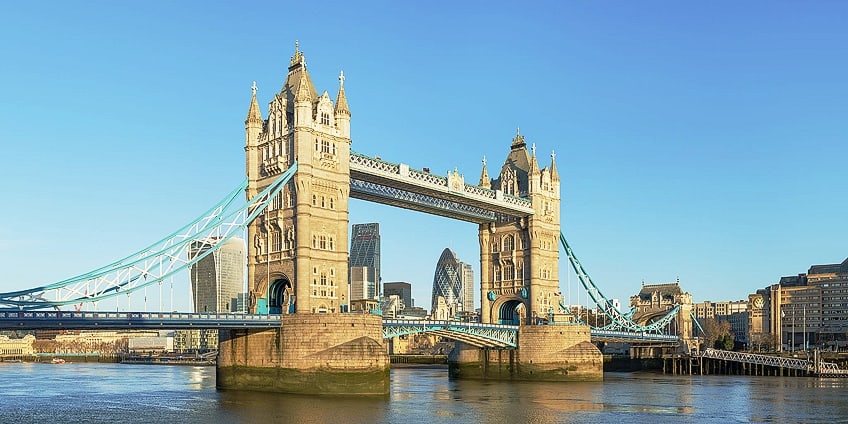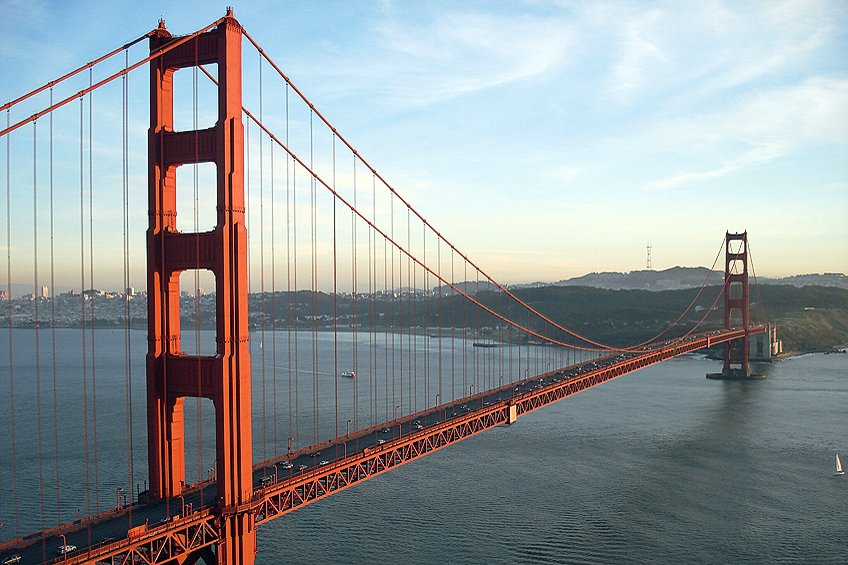10 Famous Beam Bridges – Spanning Excellence
Beam bridges are among the most iconic and widely recognized structures in the realm of civil engineering and architecture. These bridges, characterized by their simple yet effective design of horizontal beams supported by columns or piers, have played a crucial role in connecting communities and facilitating transportation across rivers, valleys, and roads for centuries. From ancient stone beam bridges to modern steel and concrete marvels, the evolution of beam bridge engineering showcases not only technical prowess but also artistic and aesthetic considerations. In this article, we delve into some of the world’s most famous beam bridges, exploring their historical significance, innovative designs, and enduring impact on infrastructure development.
Table of Contents
- 1 What Is a Beam Bridge?
- 2 Top 10 Most Famous Beam Bridges to Know
- 2.1 Pont du Gard (Vers-Pont-du-Gard, France)
- 2.2 Charles Bridge (Prague, Czech Republic)
- 2.3 Rialto Bridge (Venice, Italy)
- 2.4 Brooklyn Bridge (New York City, United States)
- 2.5 Forth Bridge (Scotland, United Kingdom)
- 2.6 Tower Bridge (London, United Kingdom)
- 2.7 Sydney Harbour Bridge (Sydney, Australia)
- 2.8 Golden Gate Bridge (San Francisco, United States)
- 2.9 Bosphorus Bridge (Istanbul, Turkey)
- 2.10 Millau Viaduct (Millau, France)
- 3 Frequently Asked Questions
What Is a Beam Bridge?
A beam bridge is a type of bridge structure that consists of horizontal beams supported by columns or piers at each end. These beams, often made of materials like steel, concrete, or wood, span across a gap, such as a river or road, to support the weight of vehicles, pedestrians, or other loads passing over them. The simplicity of their design makes beam bridges one of the oldest and most common bridge types, dating back to ancient civilizations. They are known for their ease of construction, cost-effectiveness, and versatility, making them suitable for a wide range of applications from small pedestrian bridges to larger highway crossings.

Top 10 Most Famous Beam Bridges to Know
In this section, we delve into some of the world’s most famous beam bridges, marvels of engineering that showcase the ingenuity and creativity of bridge design. Beam bridges are among the oldest types of bridges, consisting of a horizontal beam supported at each end by piers or abutments. Despite their simple structure, these bridges have been instrumental in connecting communities, spanning rivers and valleys, and facilitating transportation across the globe.
Join us as we explore the history, design, and significance of these iconic beam bridges.
Pont du Gard (Vers-Pont-du-Gard, France)
| Date of Construction | 1st century AD |
| Materials | Limestone and concrete |
| Length | Approximately 360 meters (1,180 feet) |
| Location | Vers-Pont-du-Gard, France |
The Pont du Gard is an ancient Roman aqueduct bridge that spans the Gardon River. Built in the 1st century AD, it served to transport water to the Roman city of Nîmes. The bridge’s three tiers of arches, constructed without mortar, exemplify Roman engineering prowess and stand as a testament to the ingenuity of ancient civilizations.

Charles Bridge (Prague, Czech Republic)
| Date of Construction | 1357 – 1402 |
| Materials | Stone, Brick, Sandstone |
| Length | 621 meters (2,037 feet) |
| Location | Prague, Czech Republic |
The Charles Bridge is a historic stone bridge that spans the Vltava River, connecting the Old Town with the Prague Castle area. Built in the 14th century, it features Baroque statues along its length, including the famous statue of St. John of Nepomuk.
The bridge’s Gothic towers and picturesque setting make it a beloved landmark and a popular spot for tourists and locals alike.

Rialto Bridge (Venice, Italy)
| Date of Construction | 1588 – 1591 |
| Materials | Stone, Brick |
| Length | Approximately 48 meters (157 feet) |
| Location | Venice, Italy |
The Rialto Bridge is an iconic stone bridge that crosses the Grand Canal, connecting the districts of San Marco and San Polo. Dating back to the 16th century, it is one of the oldest and most recognizable bridges in Venice. The bridge’s arched design and bustling atmosphere, with shops lining its sides, contribute to its charm and historical significance as a vital crossing point in the city.

Brooklyn Bridge (New York City, United States)
| Date of Construction | January 3, 1870 – May 24, 1883 |
| Materials | Steel and granite |
| Length | 1,825 meters (5,989 feet) |
| Location | New York City, New York, United States |
The Brooklyn Bridge is a historic suspension bridge that spans the East River, connecting Manhattan and Brooklyn. Designed by John Augustus Roebling, it was completed in 1883 and was one of the first steel-wire suspension bridges. Its Gothic-style towers and intricate cable system have become enduring symbols of New York’s skyline and engineering prowess.

Forth Bridge (Scotland, United Kingdom)
| Date of Construction | 1882 – 1890 |
| Materials | Steel |
| Length | 2,528 meters (8,296 feet) |
| Location | South Queensferry, Scotland, United Kingdom |
The Forth Bridge is a historic railway bridge that spans the Firth of Forth, connecting Edinburgh with Fife. Completed in 1890, it is renowned for its distinctive red color and innovative cantilever design, showcasing Victorian engineering excellence.
The bridge’s sturdy construction and scenic location have earned it UNESCO World Heritage status and recognition as a symbol of Scotland’s industrial heritage.

Tower Bridge (London, United Kingdom)
| Date of Construction | April 1886 – June 1894 |
| Materials | Steel and concrete |
| Length | 244 meters (800 feet) |
| Location | London, United Kingdom |
Tower Bridge is a historic bascule and suspension bridge over the River Thames, renowned for its Victorian Gothic style and iconic twin towers. Designed by Sir Horace Jones and engineer Sir John Wolfe Barry, it was completed in 1894 and has since become a symbol of London’s heritage and architectural splendor. The bridge features a drawbridge mechanism that allows ships to pass through, adding to its functionality and charm.

Sydney Harbour Bridge (Sydney, Australia)
| Date of Construction | July 28, 1923 – January 19, 1932 |
| Materials | Steel |
| Length | 1,149 meters (3,770 feet) |
| Location | Sydney, New South Wales, Australia |
The Sydney Harbour Bridge is a renowned steel arch bridge that spans Sydney Harbour, linking the central business district with the North Shore. Designed by engineer John Bradfield, it was completed in 1932 and stands as a symbol of Australia’s engineering ingenuity.
The bridge’s arch design and massive steel structure provide panoramic views of the harbor, Sydney Opera House, and surrounding cityscape, making it a popular tourist attraction and an integral part of Sydney’s identity.

Golden Gate Bridge (San Francisco, United States)
| Date of Construction | January 5, 1933 – April 19, 1937 |
| Materials | Steel and concrete |
| Length | 2,737 meters (8,981 feet) |
| Location | San Francisco, California, United States |
The Golden Gate Bridge is an iconic suspension bridge known for its elegant design and vibrant orange color. Designed by engineer Joseph Strauss and architect Irving Morrow, it spans the Golden Gate Strait, connecting San Francisco to Marin County. Completed in 1937, it stands as a testament to engineering innovation and offers stunning views of the bay and city skyline, attracting millions of visitors annually. Known for its iconic red color and Art Deco design, the Golden Gate Bridge is one of the most recognizable and celebrated beam bridges globally.

Bosphorus Bridge (Istanbul, Turkey)
| Date of Construction | 1970 – 1973 |
| Materials | Steel and concrete |
| Length | 1,560 meters (5,118 feet) |
| Location | Istanbul, Turkey |
The Bosphorus Bridge is a suspension bridge that spans the Bosphorus Strait, connecting Europe and Asia. Completed in 1973, it was the first bridge to link the two continents and has since become a symbol of Istanbul’s unique geographical position.
The bridge’s sweeping curves and illuminated towers create a striking sight, especially at night, highlighting its importance as a key transportation route and a symbol of unity between continents.

Millau Viaduct (Millau, France)
| Date of Construction | October 14, 2001 – December 16, 2004 |
| Materials | Steel and concrete |
| Length | 2,460 meters (8,070 feet) |
| Location | Millau, Aveyron, France |
The Millau Viaduct is a modern marvel of engineering and the tallest bridge in the world. Designed by engineer Michel Virlogeux and architect Norman Foster, it was completed in 2004 and spans the Tarn River Valley. Its innovative cable-stayed design and slender form complement the surrounding landscape, offering breathtaking views and revolutionizing bridge construction techniques.

The world’s most famous beam bridges stand as testament to human ingenuity, engineering excellence, and the enduring quest to overcome geographical barriers. From the ancient Roman arch bridges to the modern marvels like the Golden Gate Bridge and the Millau Viaduct, these structures continue to inspire awe and admiration for their innovative designs and technical achievements. As we look towards the future of bridge engineering, it’s clear that the legacy of these iconic beam bridges will continue to shape the landscapes and connect civilizations for generations to come.
Frequently Asked Questions
How Are Beam Bridges Different from Other Types of Bridges?
Beam bridges differ from other bridge types like arch bridges and suspension bridges in their basic design, consisting of a horizontal beam supported by piers or abutments at each end. They are typically used for shorter spans and are known for their simplicity and ease of construction.
How Do Engineers Ensure the Stability of Beam Bridges?
Engineers ensure the stability of beam bridges through careful design considerations, including calculating load-bearing capacities, selecting appropriate materials such as steel or concrete, and incorporating reinforcements like trusses or girders to enhance strength and durability.
Can Beam Bridges Accommodate Heavy Traffic and Loads?
Yes, beam bridges can accommodate heavy traffic and loads by utilizing strong materials and strategic design elements. Engineers often incorporate multiple beams, trusses, or box girders to distribute weight evenly and enhance the bridge’s load-bearing capacity, making them suitable for various transportation needs.
Isabella studied at the University of Cape Town in South Africa and graduated with a Bachelor of Arts majoring in English Literature & Language and Psychology. Throughout her undergraduate years, she took Art History as an additional subject and absolutely loved it. Building on from her art history knowledge that began in high school, art has always been a particular area of fascination for her. From learning about artworks previously unknown to her, or sharpening her existing understanding of specific works, the ability to continue learning within this interesting sphere excites her greatly.
Her focal points of interest in art history encompass profiling specific artists and art movements, as it is these areas where she is able to really dig deep into the rich narrative of the art world. Additionally, she particularly enjoys exploring the different artistic styles of the 20th century, as well as the important impact that female artists have had on the development of art history.
Learn more about Isabella Meyer and the Art in Context Team.
Cite this Article
Isabella, Meyer, “10 Famous Beam Bridges – Spanning Excellence.” Art in Context. March 19, 2024. URL: https://artincontext.org/10-famous-beam-bridges/
Meyer, I. (2024, 19 March). 10 Famous Beam Bridges – Spanning Excellence. Art in Context. https://artincontext.org/10-famous-beam-bridges/
Meyer, Isabella. “10 Famous Beam Bridges – Spanning Excellence.” Art in Context, March 19, 2024. https://artincontext.org/10-famous-beam-bridges/.









